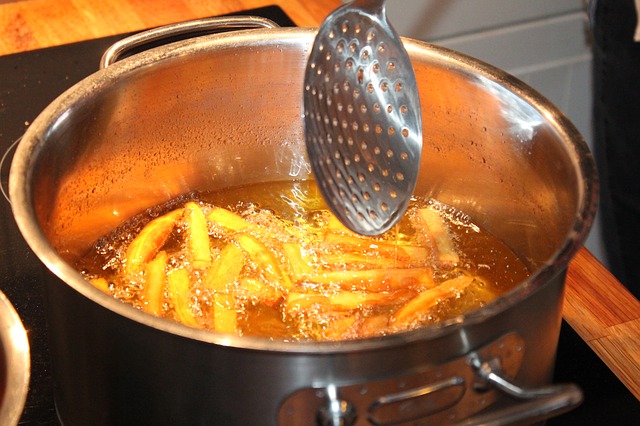Filipinos are creative cooks, so you’ll find them everywhere, from luxury ships to five-star hotels and renowned restaurants. From them we learn tips and tricks that make cooking much easier than we think.
Cold water to bring in flavor
If you want a flavorful stock/broth then you should start whatever you’re cooking cold. This means you need to add cold or tap water to your meats then bring them to a brief boil and then lower flame to a simmer.
Hot meats lock in flavor
If you want to lock the flavors inside your meats then start them hot.
Be patient when frying
In pan frying and sauteing, always get your pan hot first before adding the oil or butter so food won’t stick to the pan.
Salt brings out more garlic and ginger flavors
When sauteing with garlic or ginger, always brown them in oil after salt has been added but before any other ingredients. This will bring out the full flavor of ingredients.
Don’t pierce meat when broiling them
Never pierce meats when browning them; the juices will escape and the meats become tough and dry. Use tongs, not fork, for turning them over.

Keep distance when frying
When frying several pieces of food at a time, never let the pieces touch each other as they cook or they will stew instead of saute.
Which meats to brown quickly or slowly
Brown red meats quickly, over high heat, uncovered. Brown poultry slowly, covered or uncovered.
Maintain food temperature
Keep fried foods warm in a 250° F. oven. They may also be reheated by placing them in a 400° F. oven for 15 minutes.
Save energy and cook efficiently with the right accessory
When deep frying, use a deep heavy saucepan (3 to 4 quart size) if an electric fryer is not available.
Prevent spilling when frying food
Oil should be enough to cover the food to be fried and to allow it to move freely in the pan but should never exceed half the depth of the pan. This is to prevent spilling over of hot oil when it bubbles up on addition of cold food.
Use wire basket to prevent damage when frying small meats
A wire basket is necessary in frying small food items as meat balls, french fries, etc. for even browning on all sides, and for ease of loading and unloading to and from the pan.
Make good use of frying thermometer
Be sure fat is preheated to the recommended temperature before the food is added so that the heat, not the oil, penetrates the food. A frying thermometer is most helpful to know exact oil temperature. If it is not available, do a simple temperature test by dropping a 1″ cube of bread into the hot fat. At 370° F., which is satisfactory temperature for frying most foods, the bread will brown between 50 to 60 seconds; at 390°Fahr. it will take from 20 to 25 seconds. Adjust heat to keep an even temperature.
Conserve nutrients by steaming
Steam potatoes whenever possible to conserve nutrients. If you have to boil them, add 1 tsp. vinegar or lemon juice to the water to make potatoes snowy white. Add a little milk to the water in which cauliflower is cooked to retain whiteness.
Use of onion and salt/sugar to improve flavor
Grate a quarter of a small onion and add it and a dash of sugar and salt to the water in which you boil frozen or canned vegetables to improve the flavor. Or add a dash of MSG, garlic powder, pepper and onion flakes or powder to the salted boiling water before adding the vegetables for a richer flavor.
Best ways to cook eggs
To cook eggs in the shell: Boil water, lower eggs into the boiling water in a metal spoon so the metal absorbs the heat and the eggs won’t crack from the sudden change in temperature. Lower heat to simmer and cook eggs to desired doneness. For eggs at room temperature — soft cooked, 3 to 4 minutes; hard cooked, 10 minutes.. For eggs right out of the refrigerator: soft cooked, 5 minutes; hard cooked, 12 minutes. Immediately plunge eggs in cold water after cooking; the shell will peel off easily and the whites will be tender.
How to prevent egg shells from cracking
A teaspoon of salt added to water brings it to boil faster, cuts down on whites running out in case the shells crack.




